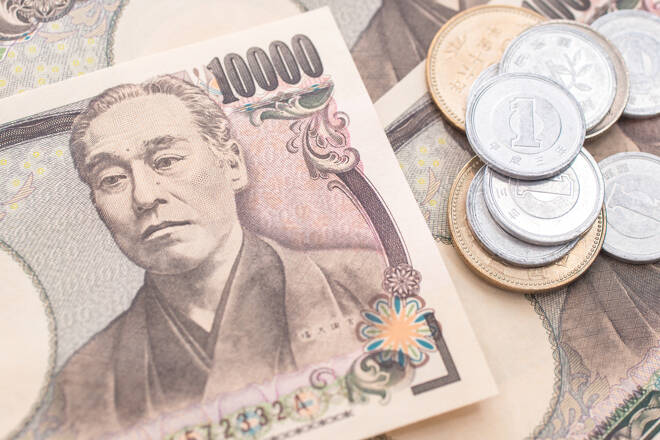Advertisement
Advertisement
Asia Market News: Aussie Consumer Confidence Wanes as the Yen Steadies
By:
Key Points:
- On Tuesday, the USD/JPY was on the back foot as intervention threats loomed over the global financial markets.
- Australian consumer confidence failed to deter the Aussie dollar bulls despite weaker-than-expected numbers.
- The Asian equity markets had a mixed session before the US inflation numbers on Friday.
Intervention Threat Offers Modest Yen Relief
The USD/JPY was on the back foot on Tuesday (March 26) morning. Japanese government officials continued to raise the threat of an intervention to bolster the Japanese Yen.
After the Monday comments from Japan’s vice Finance Minister for International Affairs, Japan’s Finance Minister, Shunichi Suzuki, warned the government was open to all options to tackle disruptive FX movements.
Finance Minister Suzuki reportedly said,
“Rapid currency moves are undesirable. It is important for currencies to move stably, reflecting economic fundamentals.”
On Tuesday, the USD/JPY was down 0.07% to 151.305. It was another range-bound morning session, with the USD/JPY avoiding any sizeable fluctuations to draw the attention of the Japanese government.
However, the stronger Japanese Yen pressured the Nikkei 225, which gave up more significant gains from earlier in the session. The Nikkei 225 was up 0.04% to 40,432.
Aussie Consumer Confidence Declined in March
On Tuesday, the Australian economy was in the spotlight. Consumer confidence figures for March drew investor attention before inflation and retail sales figures later in the week.
The Westpac Consumer Confidence Index fell by 1.8% to 84.4 in March. Economists forecast a 1.6% decline to 84.6. The March survey highlighted consumer jitters about the economic outlook and the RBA rate path. Looking at the sub-components,
- Economic conditions next 12 months slid by 4.5% to 84.9.
- The time to buy a major household item declined by 2.9% to 84.2.
- Family finances next 12 months fell by 1.5% to 93.8.
However, consumers remained confident about labor market conditions. The Unemployment Expectations Index increased by 1% to 128.1, remaining below the long-run average of 129.0.
Nonetheless, the survey revealed the RBA eased fears of further rate hikes but left consumers expecting a higher-for-longer RBA rate path. The Mortgage Rate Expectations Index over the next 12 months slipped by 0.5% to 120.9.
Despite the weaker-than-expected consumer confidence numbers, the Aussie dollar made early gains on Tuesday. The AUD/USD was up 0.12% to $0.65478.
The ASX 200 and the Hang Seng Treaded Water Amid Rising Uncertainties
On Tuesday, the Hang Seng Index was up 0.41% to 16,542. Real estate stocks provided support, with the Hang Seng Mainland Properties Index (HSMPI) gaining 1.90%. Tech stocks saw more modest gains. The Hang Seng Tech Index (HSTECH) gained 0.44% in the morning session.
Investors were cautious following the swings in the CNY/USD on Friday (March 22) and Monday (March 25). The markets were also mindful of the US Core PCE Price Index numbers out on Friday that could impact bets on an H1 2024 Fed rate cut.
In contrast, the ASX 200 was down 0.03% to 7,810. Tech stocks pressured the ASX 200 in the morning session. The S&P/ASX All Technology Index was down 1.11%.
However, gold (XAU/USD) , mining, and oil stocks cushioned the downside for the ASX 200. Gold, iron ore, and oil price gains from Monday contributed to the gains.
About the Author
Bob Masonauthor
With over 28 years of experience in the financial industry, Bob has worked with various global rating agencies and multinational banks. Currently he is covering currencies, commodities, alternative asset classes and global equities, focusing mostly on European and Asian markets.
Advertisement
